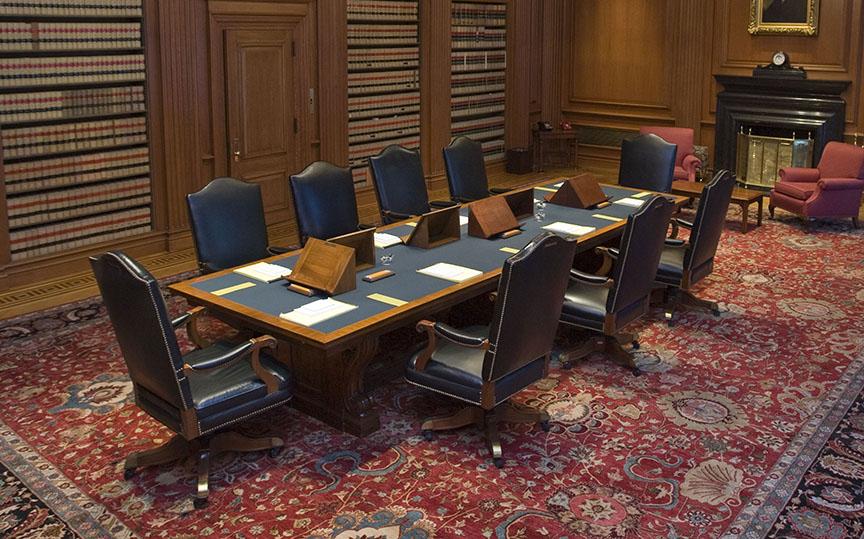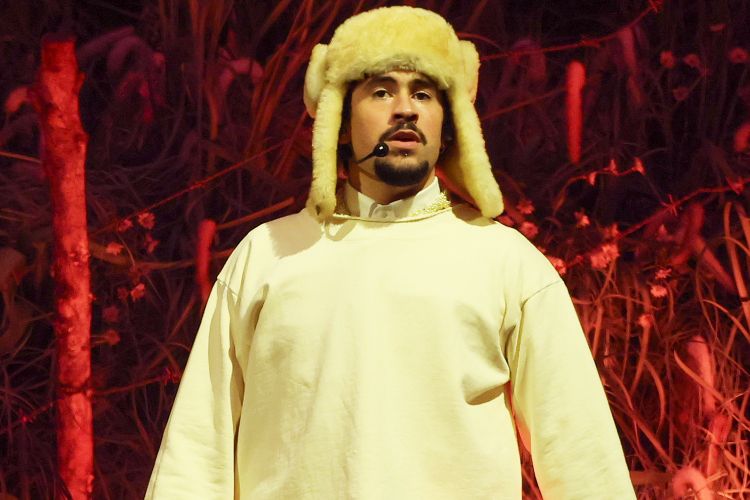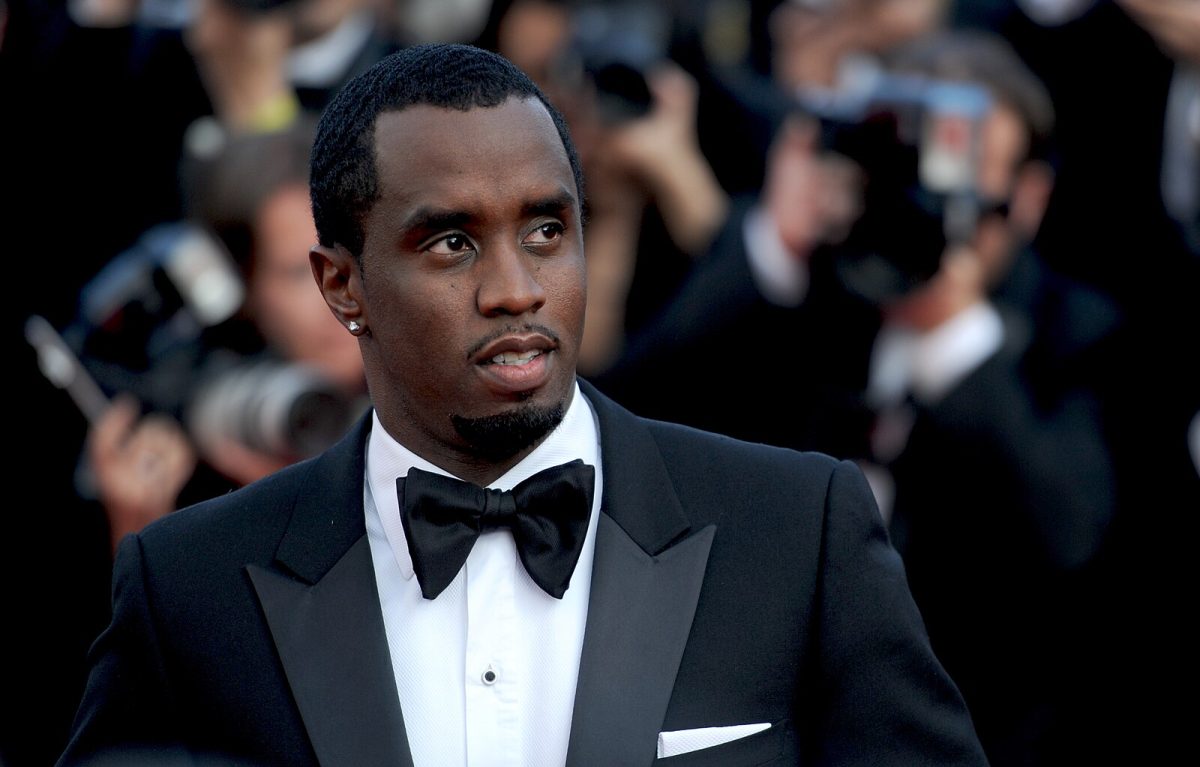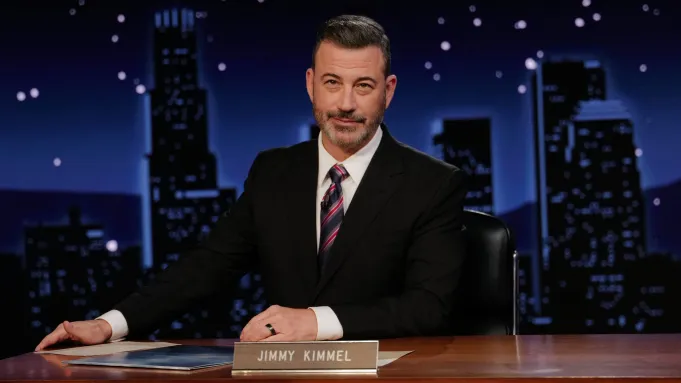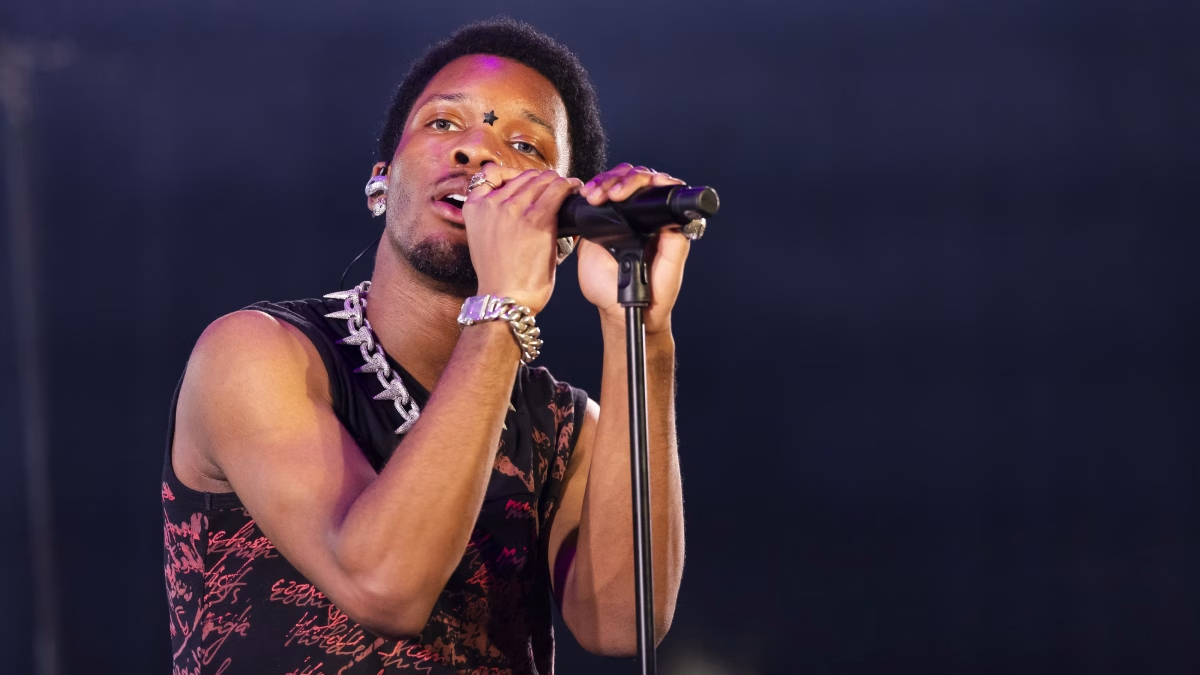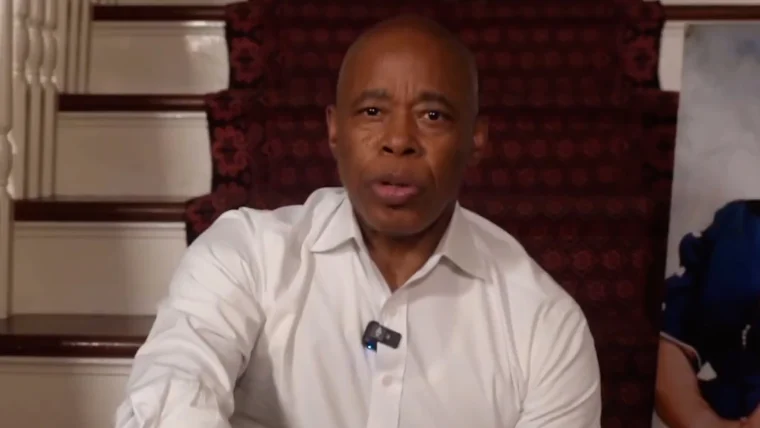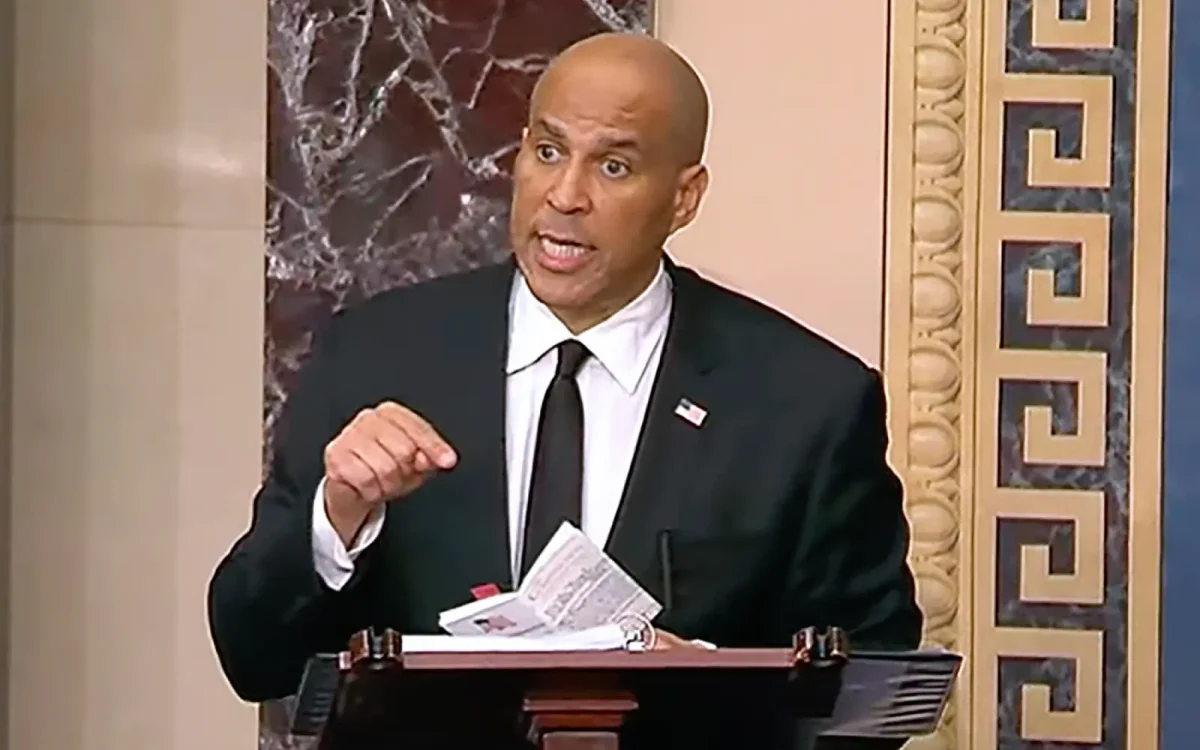The Supreme Court is the highest court in the U.S. federal judiciary system. Its purpose is to ensure that legal cases amongst all courts uphold constitutional rights for our citizens. Although the court has the jurisdiction to preside over cases with political involvement, it claims to remain neutral and fair to partisan involvement. As the dust settles on the United States Supreme Court’s newest Associate Justice nomination, take a chance to get to know the men and women that make decisions that affect us all.
John G. Roberts Jr., Chief Justice of the United States
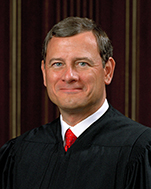
Roberts Jr. was appointed by George W. Bush in 2005 as the Chief Justice of the United States. After receiving his A.B (Bachelor of Arts) from Harvard College and his JD from Harvard Law School, Roberts served as a law clerk for Judge Friendly of the US Court of Appeals for the Second Circuit, a law clerk for then-Associate Justice Rehnquist of the Supreme Court, Special Assistant to the Attorney General, Associate Counsel to President Reagan, Principal Deputy Solicitor General, and practiced law in Washington D.C. In 2003 he was appointed to the US Court of Appeals for the D.C. Circuit. Roberts typically leans towards a conservative ruling.
Roberts most notably ruled in favor of corporate election involvement in Citizens United v. Federal Election Commission. This case was presented to the Court in January 2010. With a 5-4 ruling, the case allowed for corporations and unions to provide for political campaigns through the establishments of Super PACs (independent political action committees that are allowed to raise unlimited sums of money from corporations, unions, and individuals who are otherwise not allowed to contribute directly with campaigns).
Clarence Thomas, Associate Justice
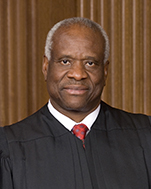
Thomas was nominated by President George H. W. Bush in 1991 as an Associate Justice. He earned an A.B. from Holy Cross College and a J.D. from Yale Law School. After school, he was admitted to law practice in Missouri, served as Assistant Attorney General of Missouri, worked as an attorney with the Monsanto Company, and was a Legislative Assistant to Senator Danforth. He served as Assistant Secretary for Civil Rights for the U.S. Dept. of Education, Chairman of U.S. Equal Employment Opportunity Commission, and a judge of the U.S. Court of Appeals for the D.C. Circuit. He typically rules with conservative views.
Thomas historically secured the conservative majority in the Good News Club v. Milford Central School. Thomas ruled that the public school violated the First Amendment by prohibiting a religious club to convene on the premises. He is considered to be the most conservative judge on the court.
Ruth Bader Ginsburg, Associate Justice

Ginsburg was appointed to the Court by Bill Clinton in 1993. She serves as an Associate Justice. She received her B.A. from Cornell University, attended Harvard Law, and received an LL.B. from Columbia Law School. She served as a law clerk to Judge Palmieri, a research associate, and later, associate director of the Columbia Law School Project on International Procedure, a Professor of Law at Rutgers University School of Law. She was a fellow at the Center for Advanced Study in Behavioral Sciences in California, an essential member to launch the Women’s Rights Project of the American Civil Liberties Union, General Council for the ACLU. She served on the National Board of Directors and was a Judge of the US Court of Appeals for the D.C. Circuit. She is traditionally a liberal ruling judge.
Ginsburg is known for her fight for women’s equality. She front lined the majority opinion in United States v. Virginia. In this case, she declared that qualified women could not be denied admittance to Virginia Military Institute because of their gender.
Stephen G. Breyer, Associate Justice
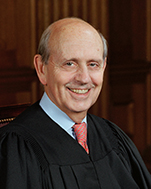
Breyer joined the Court in 1994 following a nomination for Associate Justice by Bill Clinton. He received an A.B. from Stanford University, a B.A. from Magdalen College, Oxford, and an LL. B. from Harvard Law School. He was a law clerk to Justice Goldberg of the Supreme Court, a Special Assistant to the Assistant U.S. Attorney General for Antitrust, an Assistant Special Prosecutor of the Watergate Special Protection Force, and Special Counsel, later Chief Counsel, of the U.S. Senate Judiciary Committee. He was an Assistant Professor, Professor of Law, and Lecturer at Harvard Law School, a Professor at the Harvard University Kennedy School of Government, and a Visiting Professor at the College of Law, Sydney, Australia and at the University of Rome. He served as a member of the Judicial Conference of the United States and of the United States Sentencing Commission. The majority of his rulings align with a liberal perspective.
Breyer often is able to maneuver around realistic life consequences of those affected by his rulings. Thus, he offers a different interpretation than his fellow judges. He wrote the majority opinion in Stenberg v. Carhart which ruled that banning late term abortions in Nebraska was unconstitutional because it infringed on women’s right to decide about their own reproductive health.
Samuel A. Alito Jr., Associate Justice
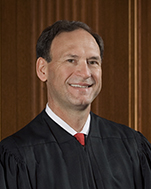
Alito, Jr. was appointed to the Supreme Court as an Associate Justice by George W. Bush in 2006. He attended Princeton and Yale Law School. He served as law clerk for Garth on the United States Court of Appeals for the Third Circuit, Assistant U.S. Attorney in the New Jersey district, Assistant to the Solicitor General, and later, Deputy Assistant Attorney General for the U.S. Department of Justice. He was a U.S. Attorney for the New Jersey district and was appointed to the U.S. Court of Appeals for the Third Circuit. He is one of the court’s conservative judges.
Alito Jr. authorized the majority decision in Burwell v. Hobby Lobby that allowed family-owned corporations the choice to be exempt from the requirement to provide female employees with access to free contraception because it infringed on the religious freedom of their owners.
Sonia Sotomayor, Associate Justice
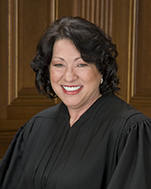
Sotomayor joined the Supreme Court as an Associate Justice in 2009 after a nomination by President Barack Obama. She is the first Hispanic to serve. She received a B.A. from Princeton University and a J.D. from Yale Law School. She was Assistant District Attorney on the New York COunty District, and litigated international commercial disputes at Pavia & Harcourt in New York City. She was nominated to U.S. District Court in 1991 by George H.W. Bush. She also served as a judge on the United States Court of Appeals for the Second Circuit. She is a liberal judge.
She notably voted against the majority in Citizens United v. Federal election Commission and ruled in favor of the majority in Obergefell v. Hodges to legalize same-sex marriage in all 50 states.
Elena Kagan, Associate Justice
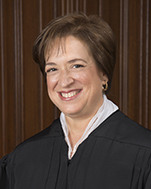
Kagan was voted into the Supreme Court in 2010 after a nomination for Associate Justice by Barack Obama. She earned an A.B. from Princeton, an M. Phil. from Oxford, and a J.D. from Harvard Law. She served as a clerk for Judge Mikba of the U.S. Court of Appeals for the D.C. Circuit, and for Justice Marshall of the U.S. Supreme Court. She practiced law at a Washington, D.C. law firm before becoming a law professor as Harvard Law. She served for four years in the Bill Clinton administration as Associate Counsel to the President, and later, as Deputy Assistant to the President for Domestic Policy. She served as the Dean of Harvard Law School and was nominated as the Solicitor General of the United States. She is the only sitting justice with no prior judicial experience. She traditionally rules along liberal ideology.
She joined the majority to rule in King v. Burwell to secure that the Affordable Care Act was constitutional.
Neil M Gorsuch, Associate Justice
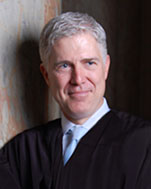
Gorsuch was nominated as an Associate Justice by President Trump in 2017. He received his B.A. from Columbia University, a J.D. from Harvard Law, and a D. Phil. for Oxford. He served as a law clerk to Judge Sentelle of the United States Court of Appeals for the District of Columbia Circuit and to Justice White and Justice Kennedy of the Supreme Court. He worked on private practice before serving as Principal Deputy Associate Attorney General at the U.S. Department of Justice. He was appointed to the United States Court of Appeals for the Tenth Circuit and served on the Standing Committee on Rules for Practice and Procedure of the U.S. Judicial Conference. He served as chairman of the Advisory Committee on Rules of Appellate Procedure and taught at the University of Colorado Law School. He is a conservative justice.
As a Constitutional originalist, Gorsuch has continued to withhold opinions that supports the original drafting of the Constitution. This is evident in his dissent from denial of certiorari in Peruta v. San Diego County. This ruling deferred a change in action and upheld the Appeals Court decision involving California’s restrictive concealed carry laws.
Brett M. Kavanaugh, Associate Justice
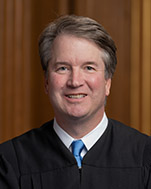
Kavanaugh was appointed as an Associate Justice in 2018 by President Trump after a long confirmation process and FBI investigation involving sexual misconduct allegations. He received a B.A. from Yale College and a J.D. from Yale Law School. He served as a law clerk for Judge Stapleton of the U.S. Court of Appeals for the Third Circuit, for Judge Kozinski of the U.S. Court of Appeals for the Ninth Circuit and for Justice Kennedy of the Supreme Court. He was an attorney in the Office of the Solicitor General of the United States and Associate Counsel in the Office of Independent Counsel. He was a partner at a Washington, D.C. law firm and Associate Counsel, and later Senior Associate Counsel to George W. Bush. He was Assistant to the President and Staff Secretary for President Bush, as well as an appointed Judge of the U.S. Court of Appeals for the District of Columbia Circuit. He is a conservative justice.
Kavanaugh has not yet ruled on any cases.

